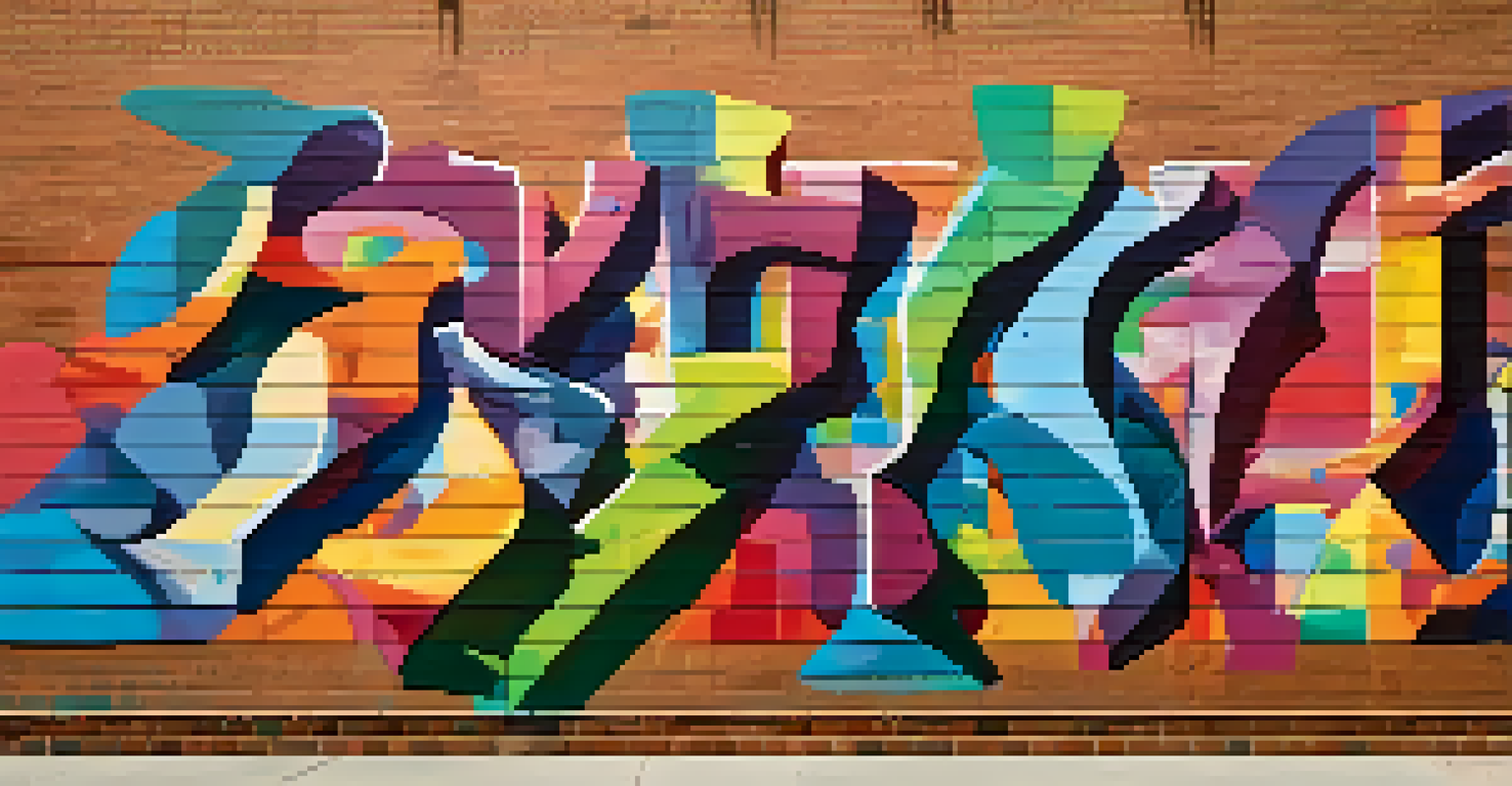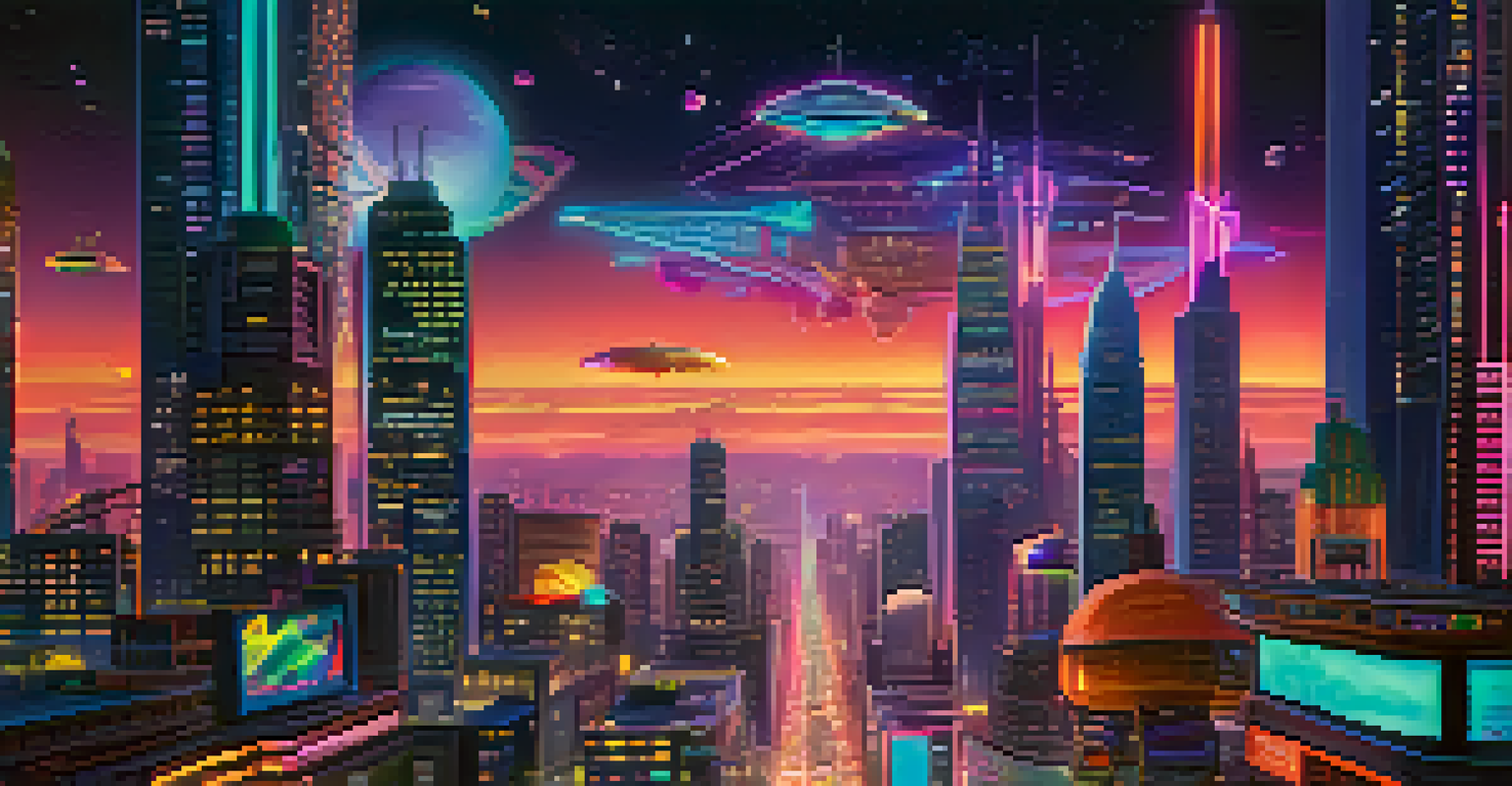Art Movements and Their Impact on Creative Processes

Understanding Art Movements and Their Significance
Art movements are defined periods in art history characterized by shared styles, techniques, and philosophies. Each movement, from Impressionism to Surrealism, reflects the cultural and societal influences of its time. By studying these movements, we can gain insight into how artists express their emotions and ideas, shaping the future of art.
Every artist dips his brush in his own soul, and paints his own nature into his pictures.
For instance, the Impressionists broke away from traditional methods, focusing on capturing light and movement rather than precise details. This shift changed how we perceive art, encouraging artists to explore personal expression over rigid techniques. Such dramatic changes in perspective have a ripple effect on creative processes across various disciplines.
Moreover, understanding the evolution of art movements helps us appreciate the diverse forms of expression that exist today. Each movement builds upon the last, creating a rich tapestry of ideas that inform contemporary creativity. This interconnectedness highlights the importance of historical context in shaping modern artistic practices.
The Impact of Impressionism on Modern Creativity
Impressionism emerged in the late 19th century, marking a significant departure from classical art forms. Artists like Monet and Renoir focused on capturing fleeting moments, emphasizing light and color over precise detail. This revolutionary approach not only transformed painting but also inspired various creative fields, including photography and design.

Today, many creators draw inspiration from Impressionist techniques, using light and color to evoke emotion in their work. The movement encourages artists to embrace spontaneity and explore their surroundings in new ways. This mindset fosters innovation, pushing creative boundaries in everything from visual arts to digital media.
Art Movements Reflect Society
Art movements serve as mirrors of their time, showcasing how cultural and societal influences shape artistic expression.
Moreover, the legacy of Impressionism is evident in how we now approach creativity as a whole. It encourages individuals to experiment, take risks, and find beauty in the ordinary. By embracing this freedom, artists and creators alike can unlock new dimensions in their work, leading to fresh perspectives and innovative ideas.
Cubism: A Revolution in Artistic Perspective
Cubism, pioneered by Picasso and Braque in the early 20th century, challenged traditional views of perspective and form. By breaking subjects into geometric shapes and presenting multiple viewpoints simultaneously, Cubism reshaped how we understand space and dimension in art. This radical approach not only changed painting but also influenced architecture and sculpture.
Art is not freedom from discipline, but disciplined freedom.
The principles of Cubism can be seen in various modern creative processes, encouraging artists to experiment with abstraction and fragmentation. This movement inspires creators to deconstruct subjects, allowing for a deeper exploration of themes and emotions. As a result, Cubism has become a fundamental aspect of contemporary artistic practices.
Furthermore, Cubism's impact extends beyond visual arts; it has influenced music, literature, and even film. By encouraging a multi-faceted approach to creativity, it invites artists from all disciplines to reinterpret reality in their own unique ways. This legacy of innovation continues to inspire new generations of creators.
Surrealism: Unlocking the Subconscious Mind
Surrealism emerged in the 1920s as a movement that sought to explore the unconscious mind and dreams. Artists like Dalí and Magritte created bizarre and fantastical imagery, challenging viewers to question reality. This movement emphasized the importance of imagination and the exploration of inner thoughts, which has had a lasting impact on creative processes.
The techniques used in Surrealism, such as automatic drawing and collage, encourage artists to break free from conventional thinking. By tapping into their subconscious, creators can discover new ideas and perspectives that might otherwise remain hidden. This exploration of the mind has paved the way for innovative practices in art, writing, and beyond.
Impressionism Inspires Modern Creativity
The techniques of Impressionism have encouraged contemporary artists to embrace spontaneity and seek beauty in everyday moments.
Moreover, Surrealism teaches us the value of embracing the irrational. In a world that often prioritizes logic and reason, this movement invites individuals to celebrate creativity's unpredictable nature. By allowing for spontaneity and imagination, artists can unlock new avenues of expression, fostering a richer creative landscape.
The Rise of Abstract Expressionism and Its Legacy
Abstract Expressionism, which gained prominence in the mid-20th century, focused on spontaneous, automatic, or subconscious creation. Artists like Pollock and Rothko emphasized the act of painting itself, using bold colors and dynamic forms to express emotions. This movement shifted the focus from representational art to the artist's emotional experience, profoundly influencing modern creativity.
Today, the influence of Abstract Expressionism can be seen in various art forms, including graphic design and contemporary installations. Artists are encouraged to prioritize their feelings and experiences, allowing for a more personal connection between the creator and the audience. This shift has led to a broader acceptance of non-traditional forms of expression.
Furthermore, Abstract Expressionism's legacy extends to the way we perceive creativity itself. It has paved the way for artists to explore their inner worlds without the constraints of traditional forms. By valuing personal expression, this movement has inspired countless creators to embrace their unique voices and interpretations.
Street Art: A Modern Expression of Culture and Identity
Street art has emerged as a powerful form of expression in contemporary society, often reflecting cultural and social issues. Artists like Banksy and Shepard Fairey use urban spaces as their canvas, making art accessible to the public. This movement challenges the notion of traditional art spaces and invites conversation about identity and community.
The impact of street art on creative processes is significant, as it encourages artists to engage directly with their environment. By responding to current events and societal issues, street artists create works that resonate with a broader audience. This dialogue fosters a sense of community and encourages collaboration among artists from diverse backgrounds.
Digital Art Expands Creative Horizons
The rise of digital art has redefined artistic boundaries, enabling greater experimentation and collaboration among creators.
Moreover, street art has influenced mainstream culture, inspiring everything from fashion to advertising. The movement has blurred the lines between art and activism, prompting creators to consider the social implications of their work. As a result, street art continues to shape the way we perceive creativity in the modern world.
Digital Art: Redefining Boundaries in Creativity
The rise of digital art has transformed the creative landscape, offering new tools and platforms for artists. From digital painting to 3D modeling, technology has expanded the possibilities of artistic expression. This movement has made art more accessible, allowing anyone with a computer to participate in the creative process.
Digital art encourages experimentation and collaboration, breaking down traditional barriers between artists and audiences. Online platforms enable creators to share their work instantly, fostering a global community of artists. This interconnectedness has led to innovative ideas and fresh perspectives in various creative fields.

Furthermore, the impact of digital art extends beyond visual mediums. It has influenced music, literature, and even virtual reality experiences. By redefining the boundaries of creativity, digital art invites us to explore new ways of thinking, ultimately shaping the future of artistic expression.
Conclusion: The Ongoing Influence of Art Movements
Art movements have played a crucial role in shaping creative processes throughout history. From Impressionism to digital art, each movement has left a lasting impact on how artists and creators express themselves. Understanding these movements helps us appreciate the evolution of art and its influence on contemporary creativity.
As we continue to explore new forms of expression, the lessons learned from past movements remain relevant. Embracing experimentation, spontaneity, and personal expression can lead to innovative ideas and fresh perspectives. By learning from these artistic legacies, we can foster a richer creative landscape for future generations.
Ultimately, the influence of art movements transcends time and space, reminding us of the power of creativity. As we navigate our own artistic journeys, we can draw inspiration from the rich history of art, shaping our unique voices while honoring the past.